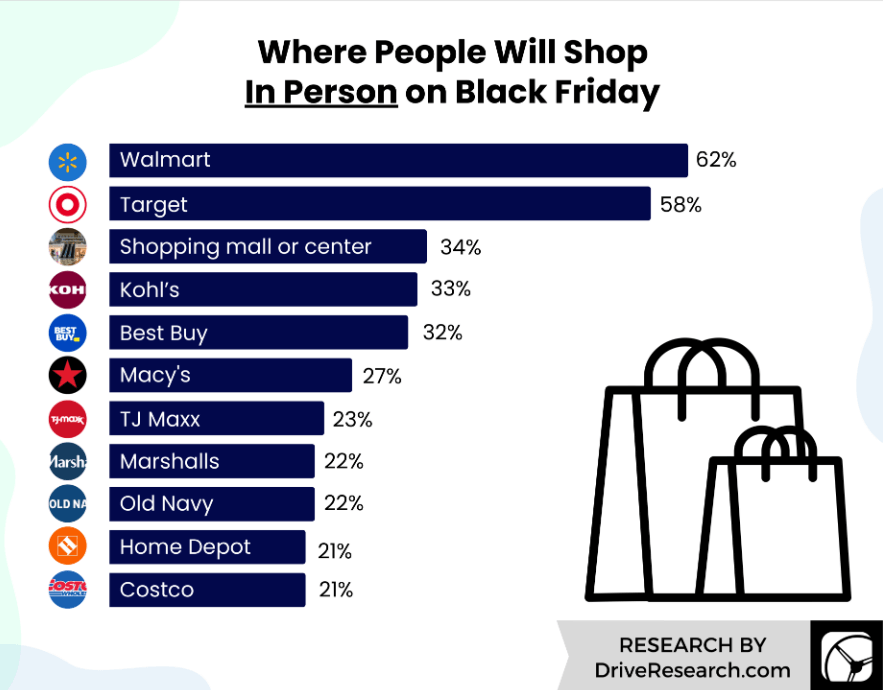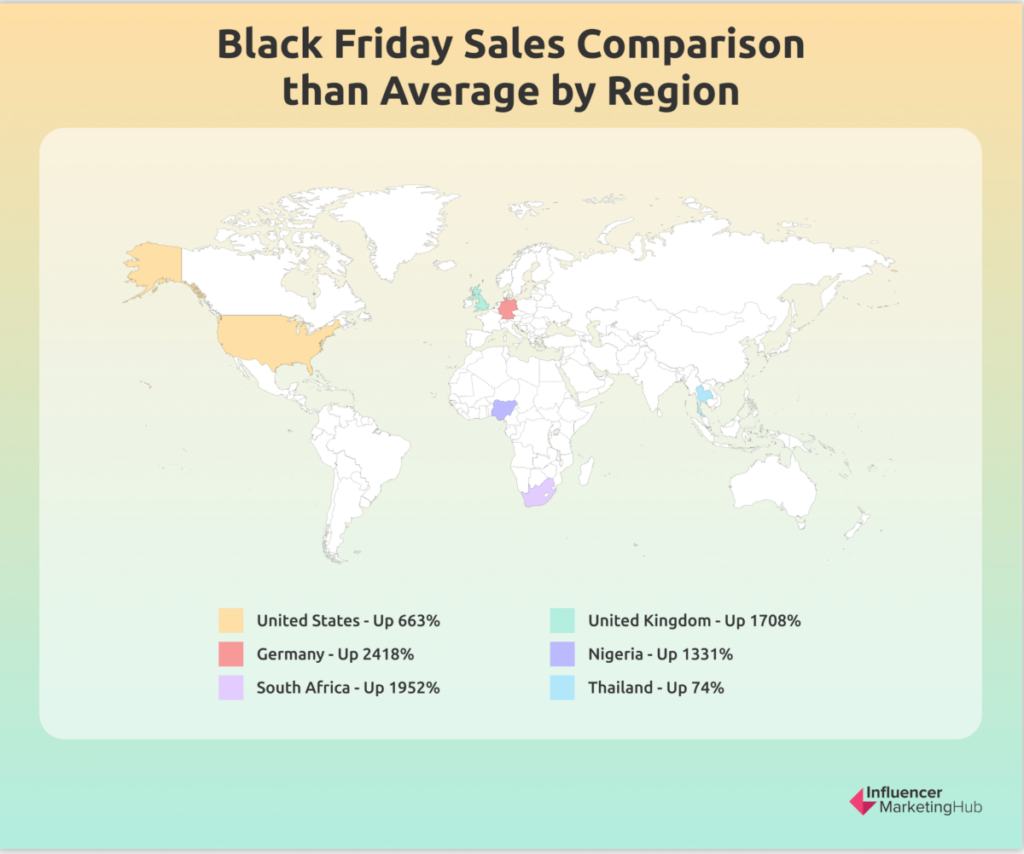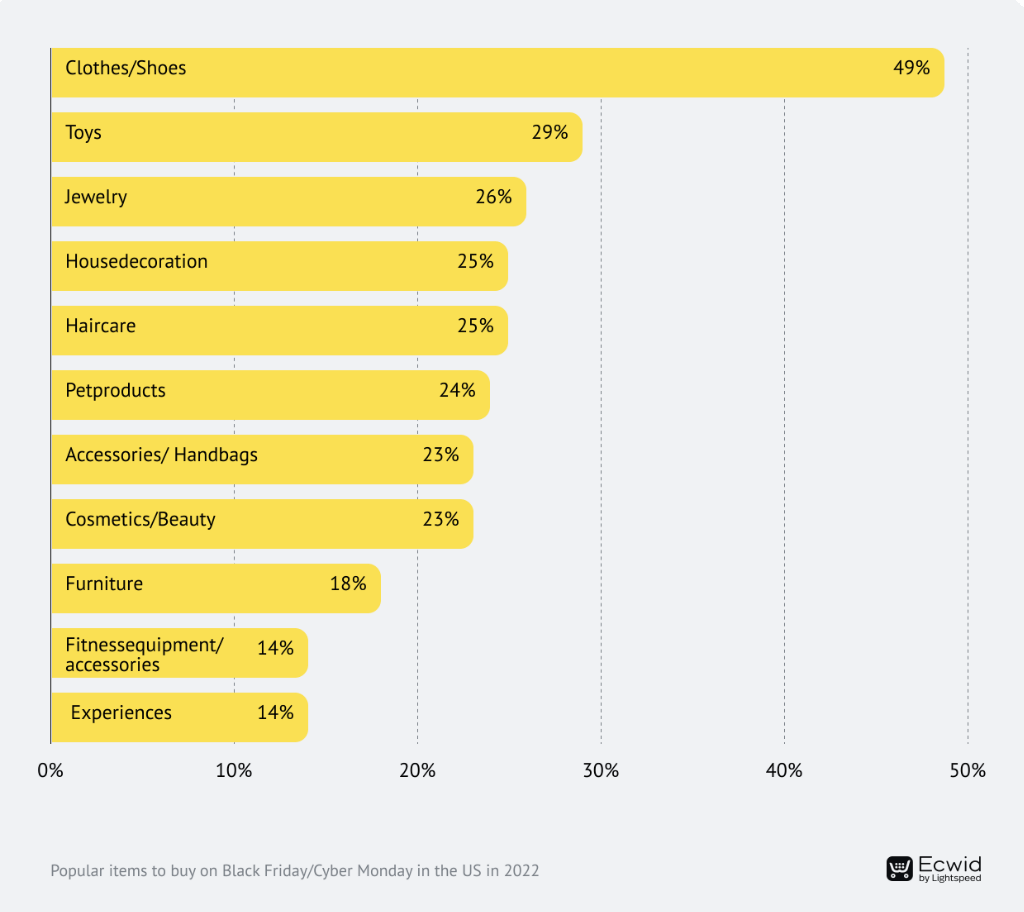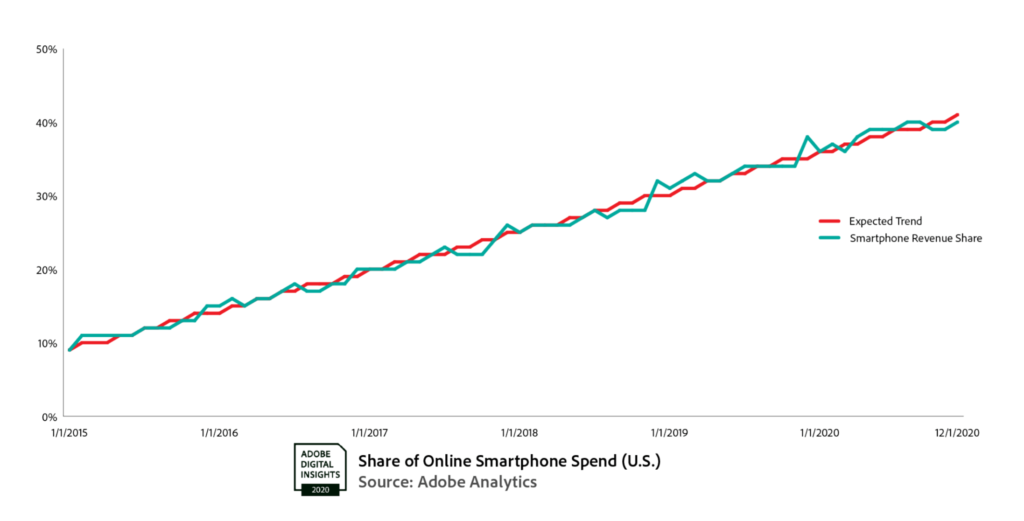Over the past few decades, Black Friday has become a critical shopping period for shoppers and retailers. Technically, Black Friday is the day after the U.S. Thanksgiving holiday and marks the start of the holiday shopping season. In the United States, many store employees have the day off before one of the busiest days of the year. Stores offer deep discounts to encourage as much spending as possible.
Although Black Friday is traditionally a single day, e-commerce stores have turned Black Friday sales into a long weekend by offering deep discounts on the following Monday, known as Cyber Monday. We've previously looked at Black Friday and Cyber Monday consumer trends and insights, and we've found that while Black Friday and Cyber Monday are two separate events, the lines between them are increasingly blurring.
Black Friday and Cyber Monday have now become routine in many countries, with people camping out early on Black Friday morning to ensure they are at the front of the queue and grab the cheapest deals. These sales are so important to many retailers that they spend a year planning, trying to make each Black Friday sale bigger and better than the last.
In 2011, Walmart announced that it would start a sale on Thanksgiving night. This started a trend where Black Friday in many places is now actually a Black Weekend. By 2022, Black Friday has expanded into a five-day holiday shopping period from Thanksgiving to Cyber Monday, with "Black Friday" sales covering the entire period. In this article, we highlight some Black Friday statistics that show how the event has grown into the premier shopping weekend of the year. The term "Black Friday" was coined in the 1950s when Philadelphia police officers had to work 12-hour shifts the day after Thanksgiving while dealing with the influx of shoppers flooding into the city. Soon however, stores across the United States (and eventually the world) began holding sales at this time. For consistency, all sales figures in this article are expressed in U.S. dollars, regardless of where they occur.

1.Nearly 200 million Americans will shop in 5 days on Black Friday 2022 According to the National Retail Federation (NRF), 196.7 million Americans shopped in stores and online during the five-day holiday shopping period from Thanksgiving to Cyber Monday in 2022. That's an increase of nearly 17 million from 2021 and the highest number since the NRF first began tracking the data in 2017. Apparently, it didn’t take long for Americans to forget their reluctance to shop during the worst of the coronavirus pandemic over the past few years.
2.More than three-quarters of U.S. consumers say they shopped over the Thanksgiving holiday weekend The NRF survey also found that (76%) of consumers said they shopped over the Thanksgiving holiday weekend, up from 70% in 2021. Those numbers exceeded the NRF's original expectations by more than 30 million.
3.Nearly 123 million people visited U.S. brick-and-mortar stores during Black Friday weekend 2022 More than 122.7 million people visited U.S. physical stores over the Black Friday weekend, a 17% increase from 2021, according to NRF.

4.More than 130 million people visited U.S. online stores over Black Friday weekend 2022 Online shopping saw considerable growth early in the pandemic, so it's no surprise that the 2022 Black Friday sales saw less growth in online customers. However, that didn’t stop 130.2 million people from participating in online shopping, a 2% increase from 2021, as NRF reports.
5.Black Friday 2022 online sales total a record $9.12 billion Adobe Analytics estimates that U.S. online shoppers spent $9.12 billion on Black Friday, November 25, alone, up 2.3% from $8.92 billion in 2021. While the increase was modest, online sales exceeded Adobe's estimate of $9 billion.
6. U.S. residents spend a lot of money online during Thanksgiving Thanksgiving may be a holiday for most Americans, but that doesn't stop them from shopping on their phones and computers. As we saw above, while many people waited until Black Friday to make purchases, there were still enough shoppers to spend $5.29 billion on Thanksgiving Day, a 2.9% increase year over year.

7.Cyber Monday 2022 leads to higher online sales Black Friday sales levels may be impressive, but online shopping has only just begun. Their online spending reached $11.3 billion, breaking e-commerce records. This represents a year-over-year increase of 5.8%.
8.Cyber Week drives $35.3 billion in online sales in 2022 If you look at the entire Cyber Week week, $35.3 billion was spent online during the holiday, according to Adobe Analytics. This is a 4% increase from the 2021 figure.
9.Toy-Driven Cyber Monday Spending Adobe found that online spending on Cyber Monday was primarily driven by toys, which saw a 684% increase in online sales compared to an average day in October 2022. Other categories that saw significant increases in online spending on the day included sporting goods (up 466%), appliances (up 458%), books (up 439%), jewelry (up 410%), electronics (up 391%) and computers (up 391%) 372%). Particularly popular products include Pokémon cards, LEGO bricks, Hot Wheels, Disney Encanto, LOL Surprise dolls, CoComelon and Hatchimals in toys, PlayStation 5, Nintendo Switch and Xbox Series X game consoles as well as FIFA 23, God of War Ragnarök , Madden 23 , NBA 2K23 and the Pokémon Crimson and Violet games. Also popular are smart TVs, Apple AirPods, Apple MacBooks, tablets, smart watches, Instant Pots and air fryers.
10.On Thanksgiving Day, 55% of online sales were made via smartphones We mentioned above that a surprising number of consumers start shopping online on Black Friday, the day before Thanksgiving. More than half of people shop via smartphone (55%, up from 51% in 2021). However, consumers don't just limit their smartphone use to public holidays. 51% of online shoppers made purchases via smartphone throughout Black Friday week (up from 46%).
11.“Buy now, pay later” is popular for Black Friday week purchases Adobe Analytics reported an 85% increase in Buy Now, Pay Later orders during the 2022 Black Friday week compared to the previous week, and an 88% increase in revenue.
12.Paid search remains biggest driver of retailer sales at Cyber Week 2022 Adobe is once again looking at online sales (and only in major channels) and finds that paid search remains the biggest driver of sales for retailers this week (accounting for 28% of online sales). Other channels with significant impact include direct channel (18%), affiliates/partners (18%), email (17%) and organic search (15%). Social media marketing has a surprisingly small share (less than 5%), but that share grew 27% year over year.
13.Black Friday in-store traffic increased 2.9% in 2022 compared to 2021 Sensormatic collected in-store shopping data from U.S. brick-and-mortar retail stores and malls on Thanksgiving and Black Friday 2022. They found that shopper visits led to a 2.9% increase in traffic in 2021 compared to Black Friday, November 25. Compared to Black Friday 2021, enclosed mall traffic increased by 1.2% and non-mall traffic (such as lifestyle centers, strip centers and independent stores) increased by 4.7%.
14.Thanksgiving in-store traffic increased 19.7% in 2022 compared to 2021 They also saw a significant increase in store traffic on Thanksgiving Day. On Thanksgiving Day, November 24, customer traffic in physical stores increased by 19.7% year-on-year.
15. Total U.S. sales during Thanksgiving weekend increased 10.9% year-on-year Mastercard reported that U.S. retail sales increased 10.9% year over year during the 2022 Thanksgiving weekend, after excluding auto sales from last year's Black Friday statistics. Mastercard SpendingPulse measures in-store and online retail sales across all payment forms and is not adjusted for inflation. The data covers the period from Thursday, November 24, 2022, to Sunday, November 27, 2022. Mastercard observed that restaurants (+23.3%), apparel (+14.4%) and electronics (+2.0%) were the main drivers of weekend growth.
16.Shopify merchants break Black Friday records with $3.36 billion in Black Friday sales in 2022 Shopify announced a record Black Friday 2022, with sales reaching $3.36 billion starting on Black Friday in New Zealand and ending on Black Friday in California. This marks a 17% increase in Black Friday sales in 2021. Shopify sales peaked at $3.5 million per minute at 12:01 pm ET on Black Friday.
17.Shopify merchants generated $7.5 billion in global sales throughout Black Friday weekend in 2022 Shopify also released global sales data for the extended shopping weekend. The 2022 Black Friday Cyber Monday weekend set a record, with global independent businesses generating $7.5 billion in sales, a 19% increase over the 2021 Shopify Black Friday Cyber Monday weekend of $6.3 billion in sales.
18. More than 52 million consumers purchased items from Shopify stores during Black Friday Cyber Monday weekend 2022 Over 52 million consumers globally purchased from independent brands powered by Shopify during Black Friday weekend 2022, a 12% increase from 2021.
18.76% of Shopify customers are looking for quality products that last Shopify conducted a survey of more than 24,000 consumers around the world to understand their shopping intentions during the Black Friday weekend. 76% of respondents said they are looking for better, more durable products. 84% of respondents said they plan to compare prices before buying over the weekend to get the best discounts.
19.Shopify customers’ average price per order over the weekend is $102.10 Shopper spending climbed in many countries, with global consumers spending an average of $102.10 per order over the weekend, compared to the 2021 global average of $100.70.
20.The Shopify platform funded more than 56,000 tons of carbon removal Shopify reported that they funded more than 56,000 tons of carbon removal to offset emissions from the delivery of every order placed on their platform during the Black Friday/Cyber Monday weekend. Shopify data scientists build rigorous formulas to calculate the estimated carbon emissions of each order, and Shopify then pays to remove the same amount of carbon emissions from the atmosphere. This amount equates to a reduction of 13,000 passenger vehicles in one year.
22. Peak shopping times for Black Friday in the U.S. are midnight and 2 p.m. Black-Friday.Global analysts have been following Black Friday trends in the United States and around the world for years. They were surprised to find that the peak buying times (each accounting for 6% of total sales) were midnight and 2 p.m. Apparently, online shoppers prefer night shopping, while brick-and-mortar shoppers prefer early afternoon. However, German shoppers work more civilized hours. Their shopping hours are relatively stable, from 8am to 8pm, with a peak at 9am. However, even in Germany, 4% of Black Friday sales occur at midnight. In the case of India, most shopping happens after noon (6% of sales for the day), with the real spike at 7pm (7%), with a peak at 9pm (10%).
23.Black Friday sales average 663% higher than usual Black-Friday.Global also reported that average sales increased by 663% compared to normal. However, there are considerable differences between countries. Black Friday 2022 was particularly popular in Germany, with an increase of 2418%. Other countries with significantly above-average Black Friday shopping include South Africa (+1952%), the UK (+1708%) and Nigeria (+1331%).

However, Black Friday had a smaller impact in Thailand, with sales rising just 74% compared to a regular shopping day. in conclusion Black Friday and the days surrounding it are now some of the busiest shopping days of the year.
Black Friday sales had a snowball effect. Some Philadelphia retailers are kicking off the campaign by running sales during this time of year. This encourages shoppers to spend money during that time. More retailers join and more shoppers take notice. With the advent of online shopping, Black Friday sales have gone global and international consumers have come to expect bargains. Retailers, not wanting to miss out on sales at the expense of their competitors, jumped on board. The cycle continues every year, with more retailers and more shoppers around the world. How long this cycle of low prices leading to increased demand and sales will continue, only time will tell. In the meantime, retailers would be brave if they could break away from this established shopping trend now. Even a global pandemic hasn't been able to dampen this shopping spree, with shoppers shifting more of their shopping from brick-and-mortar stores to online.